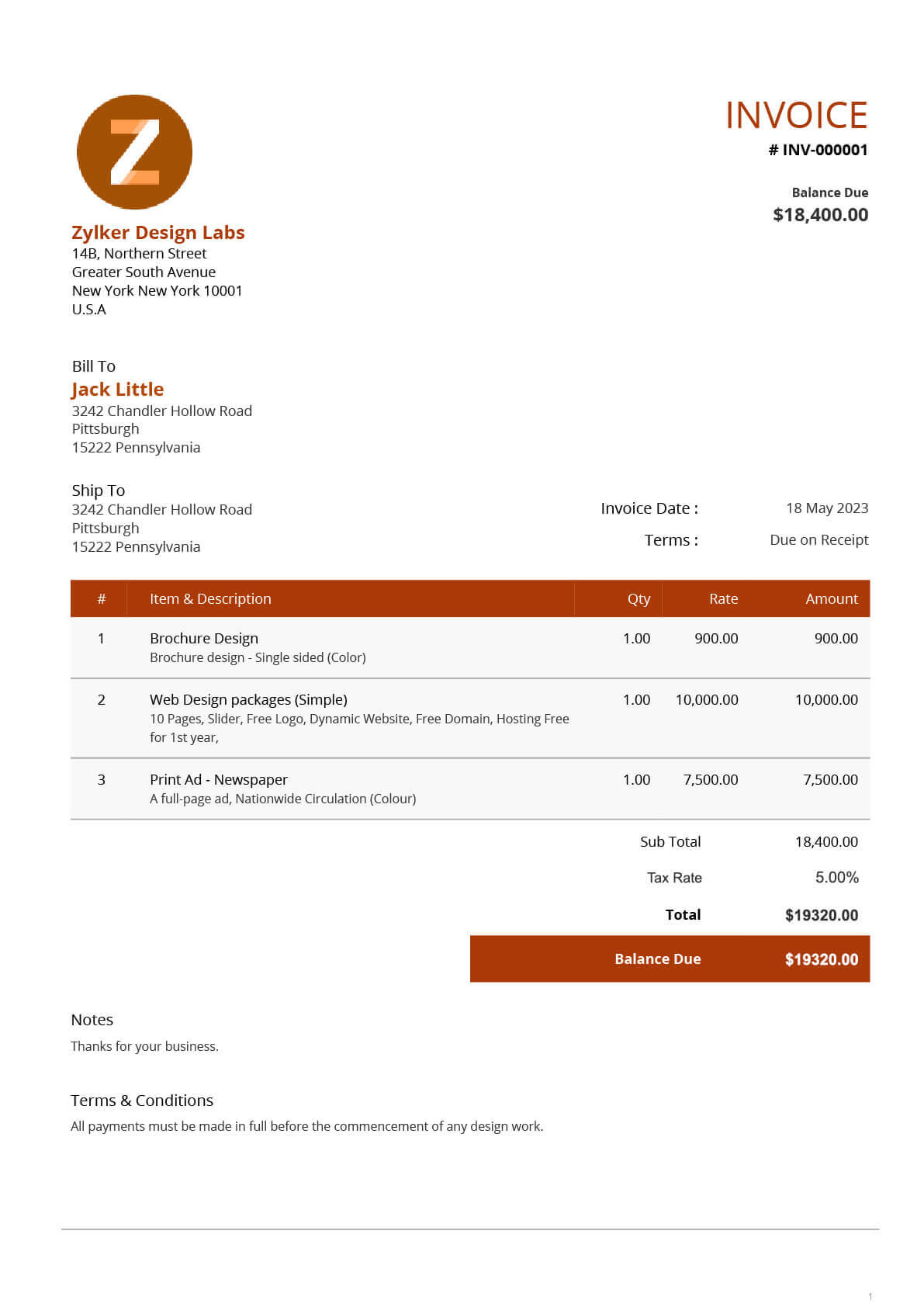A service bill is essentially a formal document that outlines the services provided, the corresponding costs, and payment terms. It’s a crucial tool for businesses to track income and expenses, and for clients to understand the charges incurred.
Here’s a basic breakdown of what a service bill typically includes:
1. Header:

Image Source: zoho.com
2. Service Description:
3. Total Cost:
4. Payment Terms:
5. Footer:
Tips for Creating Effective Service Bills:
Be clear and concise: Avoid using jargon or technical terms that your client might not understand.
Conclusion
A well-formatted service bill is essential for any business that provides services. By following the guidelines outlined above, you can create professional and effective invoices that help you get paid on time and build strong relationships with your clients.
FAQs
1. What is the difference between a service bill and an invoice? While the terms are often used interchangeably, a service bill typically refers to a document detailing the services provided by a professional or business, while an invoice is a more general term for a document requesting payment for goods or services.
2. Can I include additional information on a service bill? Yes, you can include additional information such as discounts, late fees, or payment options.
3. How often should I send service bills? The frequency of your service bills depends on your business practices. Some businesses send bills monthly, while others send them after each project is completed.
4. What should I do if a client disputes a service bill? If a client disputes a service bill, it’s important to review the details carefully and address any concerns promptly.
5. Can I use a digital service bill? Yes, you can use digital service bills, which can be sent via email or a payment processing platform.
Service Bill Format







